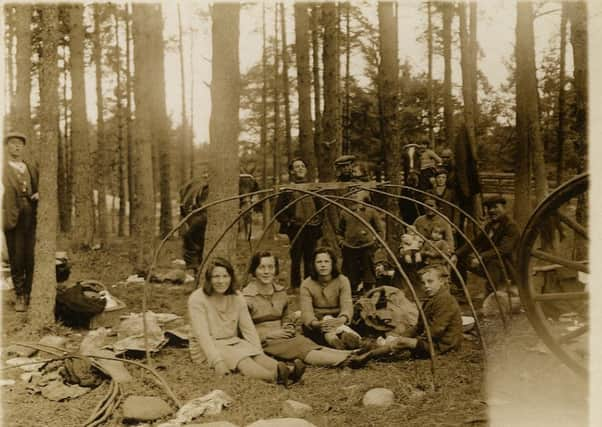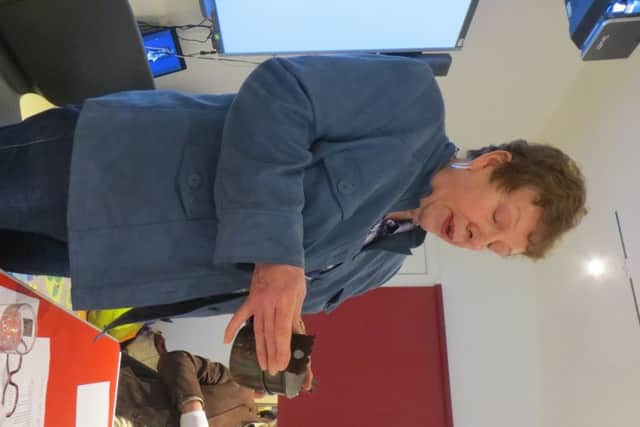Traveller culture ‘on verge of extinction’


Essie Stewart, 73, who was born into a Sutherland travelling family, believes modern-day travellers are giving her forebears a bad name, particularly by becoming involved in criminal activity.
She is playing a major role in an exhibition launched next month at Inverness Museum and Art Gallery, called Transitions.
Advertisement
Hide AdIt aims to celebrate and reflect on the culture of Highland travelling people, which she fears has all but vanished.


Stewart, a Gaelic storyteller with a strong grounding in traveller tradition, has become famous for her telling of legends, Celtic stories and epics, as well humorous tales handed down from her gypsy grandfather in both English and Gaelic.
Her grandfather was one of the greatest Gaelic storytellers of them all – Allidh Dall Stewart, a tinsmith, piper, soldier and singer, who died in 1968. She said: “It is a culture and a life that is fast disappearing. Some of our heritage can be traced back to the 5th century.
“Our history has not been told in this manner before. But the travelling community today is not what it was.
“I don’t recognise today’s travellers. I don’t know who they are, and I don’t want to know who they are. They not only give themselves a bad name, but they give historical travellers a bad name.”
Stewart gave up travelling in 1957 when her grandfather became blind.
Advertisement
Hide AdShe said: “My grandfather made items such as milk pales and strainers. When he became blind, he could no longer do this.
“We had horses and a cart and we used to work on the farms with the horses. But then tractors came in and the need for horses on farmland began to die out.
Advertisement
Hide Ad“Put all these things together and you will see the killing off of a part of life. I just welcome this new exhibition in telling a history in the Highlands that has not been told.”
The exhibition has been created in partnership between Inverness Museum and Art Gallery, members of mental health campaigning organisation Highland Users Group (HUG), and and Moniack Mhor writers’ centre.
Cait McCullagh, curator at Inverness Museum, said: “Transitions is an invitation to join in a journey that celebrates the gifts of those often misunderstood and disregarded. The way is rich in gifts of story and tradition.
“Using objects from the Inverness Museum and Highland Folk Museum Collections and images from the Highland Photographic Archive, members of HUG have been working with the museum team and Essie Stewart to research, interpret and share the gifts of traveller musical and craft-making traditions.
“This has enabled everyone to explore not only the experiences of the Highland travellers, including the ways in which they have been marginalised, but also to reflect on their own understanding of social exclusion and labelling.”
Also playing a part in the exhibition are poet John Glenday and artist Eleanor White.
Advertisement
Hide AdHamish Fraser, chair of Highland Council’s community safety, public engagement and equalities committee, said: “We welcome the valuable work undertaken to conserve and promote the historical contribution of Scottish gypsy travellers.
“I would encourage people to go and see this exciting exhibition and learn more about the culture of the gypsy traveller communities.”
Advertisement
Hide AdEssie Stewart has been a guest speaker and storyteller at the School of Scottish Studies. She has appeared at Celtic Connections, the Scottish International Storytelling Festival, and the Barbican in London.
In Gaelic, the travellers were known as the “Ceardannan”, the Black Tinkers, and recognised as a tribe, separate to the settled population.
In ancient times there was a caste of itinerant metal–workers. One of the trades associated with them from early times was that of tinsmith, and it is clear that to primitive man the ability to use metals seemed very close to magic; consequently both “black” and “white” smiths for long enjoyed immense prestige, not only as craftsmen but also as wielders of secret powers.
The exhibition runs from 2 July to 22 August.